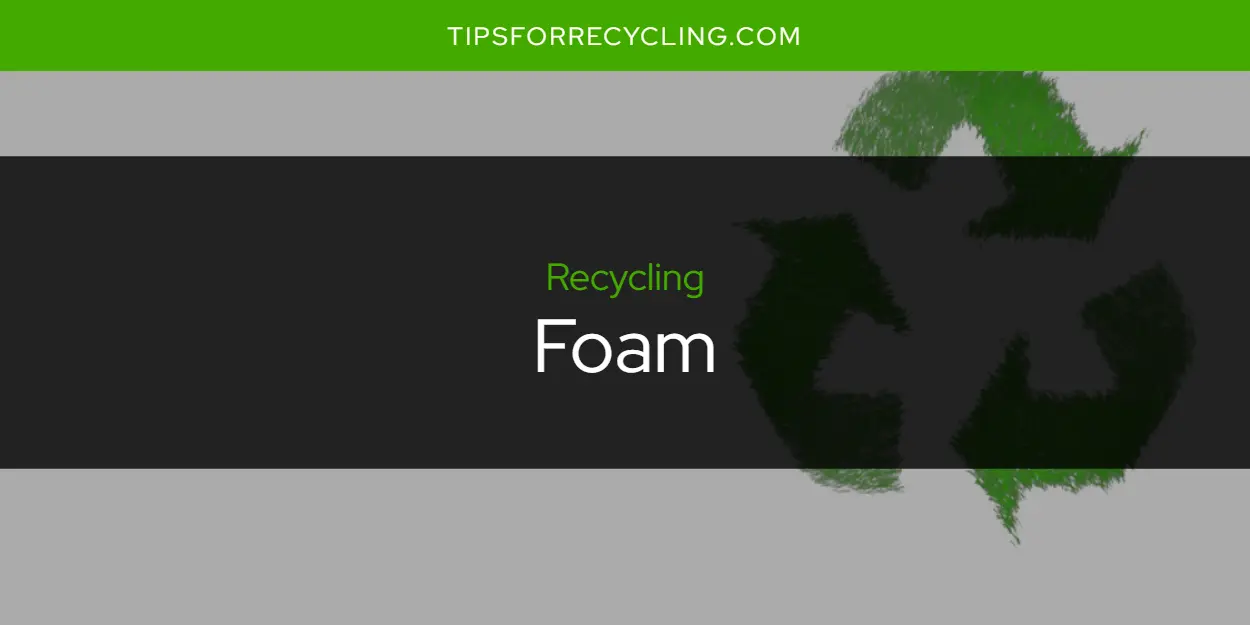Is Foam Recyclable?

With more and more products being made with foam packaging, the question of whether it can be recycled is becoming increasingly important. Foam is a popular material for many reasons, including its lightweight nature and its ability to cushion fragile items during shipping and storage. Unfortunately, while foam itself isn’t biodegradable, there are several steps that you can take to ensure that your foam packaging doesn’t end up in a landfill.
See the below map for locations where you can recycle foam.
Yes! In fact, many businesses have found ways to make money by recycling foam. For example, some companies have set up reuse centers where customers can bring in any type of foam for recycling. These centers then grind the foam up into tiny pieces, which are then sold to manufacturers who use them to create other kinds of products. The resulting income from these sales helps cover the cost of running the reuse center and provides an additional revenue stream for the owners.
Other businesses have found success by selling recycled foam materials directly to consumers on online marketplaces like eBay or Amazon. This method requires minimal setup costs and offers a great way for entrepreneurs to earn some extra money while helping reduce waste at the same time.
Similarly, see if you can recycle foam mattresses.
If you’re interested in setting up your own foam recycling program, there are a few steps you’ll need to take before you get started. First, contact your local government agency or private recycler (such as TerraCycle) to see what kind of services they offer when it comes to collecting and processing used foam materials. If there aren’t any available options in your area, consider contacting larger chains like UPS or FedEx — they might be able to provide assistance with drop-off points or even pick-up services if you generate enough volume.
Once you’ve identified an appropriate collection point or service provider, make sure that everyone who participates in your program knows exactly how and where to drop off their used foams — this will help ensure everything gets recycled properly instead of ending up in a landfill somewhere! Finally, if possible try working with local businesses that produce lots of foam packaging — this will give you access to higher volumes of materials without having to sort through individual customers’ contributions yourself (which could become very time consuming).
Similarly, see if you can recycle foam sheets.
There are several different types of foams out there – each one must be handled differently when it comes time for recycling:
Polyurethane foams (such as those found in mattresses) can be ground up into small pieces which can then be sold as raw material for other products such as carpet pads or soundproofing insulation;
Polyethylene foams (used most commonly as packing peanuts) must first be compacted into dense bales before they can be recycled;
Expanded polystyrene (commonly known as Styrofoam) has historically been difficult/impossible to recycle due to its low density – however newer technologies now exist which allow this material to also be collected and reused!
Knowing which type of material needs specific handling should help make sure that all your collected foams end up being recycled properly instead of discarded (or worse yet – sent off into landfills!).
Similarly, see if you can recycle foam rubber.
There are numerous benefits associated with recycling foams – not only does it help reduce waste but these materials can also be given new life as well! By utilizing existing resources we are not only helping preserve our planet’s limited resources but also creating jobs within our communities by providing employment opportunities related directly with the collection/processing/distribution/etc…of these materials. Additionally, when done correctly (and safely!) these activities often result in significant energy savings compared with producing similar products from scratch using raw materials – meaning even less damage on both our environment & wallets! Finally – donating unused foams instead of throwing them away does wonders for those less fortunate than us who may not otherwise have access too basic necessities such as furniture & bedding which require large amounts easily recycled polyurethane foams during production process….